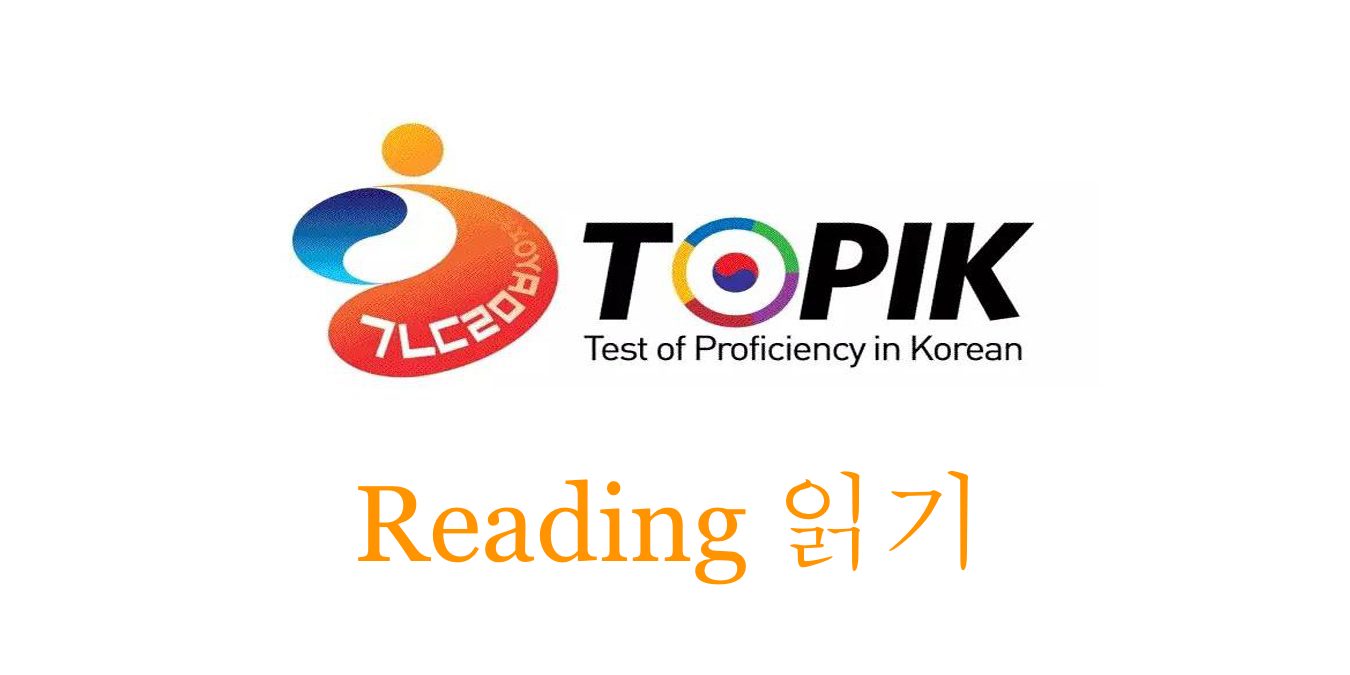TOPIK 읽기 (Reading) measures are extremely simple. In conclusion, learning Sino-Korean is the most efficient. Sino-Korean is a vocabulary written in Chinese characters represented by the Chinese vocabulary in Japanese and Korean. For example, 教室-교실(classroom) → 室内 -실내(Indoor) → 内装-내장(Interior), you can see that both Japanese and Korean are based on Sino-Korean. I will explain these details later. There are many other countermeasures, so I will share them with you.
Preparing for TOPIK 읽기 (Reading)
Know what TOPIK 읽기(Reading) requires
In the previous conclusion, I said that memorizing Sino-Korean words is the most essential and efficient way to deal with reading. The reason to increase TOPIK scores is to know the TOPIK test itself.
Tips for 읽기(Reading)
- Identify the question type – depending on the type of questions, the answers can be identified to some extent
- Narrow focus and limit keywords – to be able to read faster and find answers easier
- Use the elimination method – to increase the percentage of correct answers
- Solve the same problem books or reference books more than twice – to improve the efficiency of learning Korean by remembering them
- Time management for each question – to increase the efficiency of the answer to the questions
- Be able to explain your answer – suppose you choose an answer, and if you can’t explain why you chose it, you’re generally wrong *3 causes of incorrect answers ①Misreading the questions ②Misreading the passages ③Misunderstanding words
- Decide when and where to study – find a time zone where you can concentrate and learn effectively
- Looking for a teacher who has good ability for Korean – Getting feedback facilitates learning Korean
Memorizing words(Sino-Korean) (Best recommended)
Memorizing words is the most effective. It’s a simple and difficult journey, but it’s a Korean language learning method that you can definitely feel the effect. As mentioned in the introduction, it is highly recommended to learn Sino-Korean because about 60% of Korean is composed of Sino-Korean.
Example 学生-학생 生活-생활 活発-활발 発達-발달 達人-달인
Sino-Korean and Korean match the same number of characters as above. If you speak Japanese as your native language, you may have noticed that it is just converting Sino-Korean into Korean Hangul. Therefore, it is easy for Japanese to learn Korean because they only need to learn which Chinese characters are converted into Korean.
If your native language is not Japanese, you will have a hard time memorizing Korean words. Japanese people start learning Chinese characters at the age of six, so it is relatively easy to learn Korean because of the advantages of learning Korean. But you don’t have to be disappointed. I have a way to recommend it to those who don’t speak Japanese. Below is an example.
Example 学生-학생 生活-생활 活発-활발 発達-발달 達人-달인
학(学) – learn + 생(生) – alive or -er = a student (a leaner)
생(生) – alive or -er + 활(活) – energy = life or living
활(活) – energy + 발(発) – emit = activeness
발(発) – emit + 달(達) reach = development
달(達) reach + 인(人) a person = a master or an expert
In this way, kanji has several meanings in one letter. Let’s memorize the kanji words one by one by matching the meaning and kanji. It takes time, but your Korean ability will definitely improve. Also, when memorizing words, keep in mind the following :
- Using of five senses as much as possible
- Memorizing words through images and illustrations rather than characters
- Linking words with the sound
- Repeat the vocabulary book at least three to five times.
- To actively say the words you memorize or write an essay to make output
When I learned words, I used vocabulary books a lot. I used to use three vocabulary books before taking the TOPIK, and I did four times of all three books. A vocabulary book will have a tremendous effect only by repeating it.
I also learned words by listening voices and writing essays, because I was able to combine words with the sounds and was able to get feedback from my native friends by using the words in my essay to output them.
Solving past questions (Not recommended)
It’s not a bad way, but keep in mind that it’s just a way. The most important thing in Korean is how many Korean words you learned before the test. I think there are advantages to solving past questions, but there are a few points to keep in mind.
- Don’t try to memorize Korean words in past questions – if you want to, open a vocabulary book
- Don’t just solve it blindly, but solve it with a clear purpose. – For example, what kind of questions you often make mistakes, what are the keywords in a sentence, etc.
Again, Reading(읽기) is relatively easy to prepare, so if possible, focus on memorizing as many Korean words as possible, rather than trying to solve too many past questions.
Below is a Youtube account called Topik 3급 with a lot of past questions on 읽기(Reading)、듣기(Listening)、쓰기(Writing). Please use it for learning Korean (^◇^)
In the end
The above content can be applied not only to Korean study but also to other languages, so please make use of it! I would appreciate it if you could leave a comment if this article was helpful for TOPIK study or if you thought your language learning method was like this (о´∀`о)

References – YouTube.com
thumbnail – bestmytest.com



Comment